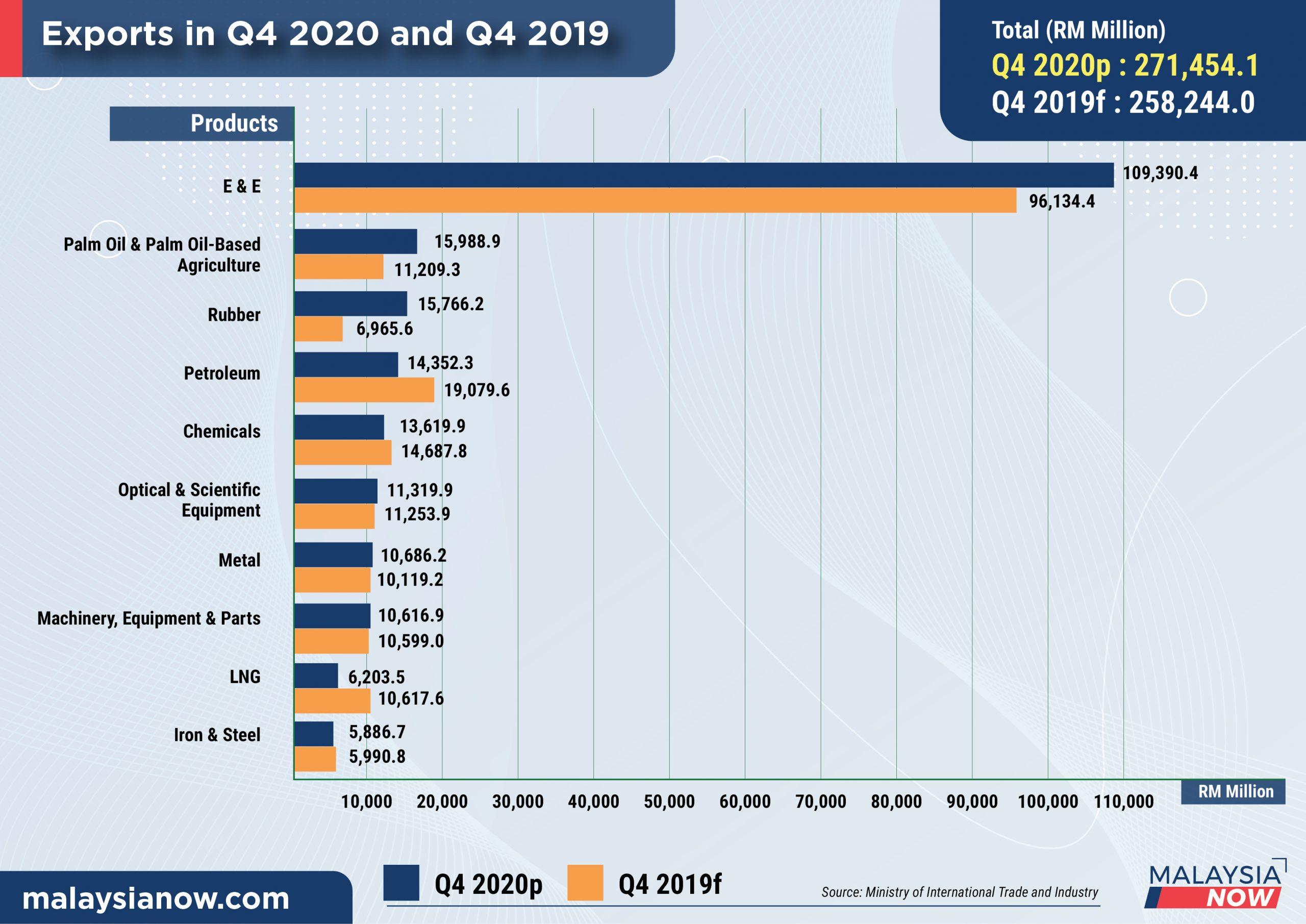GDP to rebound this year as trade surplus makes biggest jump in over 2 decades
Electrical products held the biggest share of total exports last year, while a surge in rubber products showed a silver lining in the new norm brought on by the pandemic worldwide.
Just In
Putrajaya is confident that 2021 will show better economic performance despite the continuing Covid-19 pandemic which has seen rising infections and deaths worldwide prompting a return to lockdowns.
In a detailed report on trade performance, it said gross domestic product (GDP) is expected to rebound by between 6.5% and 7.5%, higher than the forecasted growth for the Asean-5 grouping.
The growth for the group, which puts Malaysia together with Singapore, Indonesia, the Philippines and Thailand, is forecasted at 5.2%.
It also sees a higher demand for semiconductors and commodity-based products to drive exports this year.
The report released by the international trade and industry ministry showed trade surplus last year was the highest in more than two decades despite Covid-19’s impact on the economy.
Senior Minister Mohamed Azmin Ali said adding to the confidence is the latest Moody’s ratings on Malaysia’s local and foreign currency long-term issuer ratings at A3 with a stable outlook.
“This is a testament to the government’s strong fiscal discipline and robust medium-term growth prospects and demonstrates Moody’s confidence in Malaysia as having strong credit standing.
“While these are challenging times, the government’s priority is to place the nation firmly on the path of economic recovery, particularly with the 12th Malaysian Plan as the blueprint for sustainable growth founded on sound economic fundamentals and decisive policy measures,” said Azmin, who is the international trade and industry minister.
Trade surplus continued a four-year trend of double-digit growth, but last year it expanded 26.9% to RM184.79 billion from the previous year, the biggest jump since 1998.
While exports declined by 1.4% in 2020 due to worldwide restrictions on economic activities, they rebounded in the second half of 2020, increasing by 4.8%.
There were lower exports to Thailand, India, Bangladesh, Vietnam and Japan, while exports to China, the US, Singapore and Hong Kong recorded growth.
At the top in Malaysia’s export market was China, expanding by 12.5% to RM158.6 billion, and contributing 16.2% of total exports in 2020.
“The expansion was driven by higher exports of iron and steel products, other manufactures (SSD), E&E products, the manufacture of metal, palm oil and palm oil-based agriculture products, rubber products as well as paper and pulp products,” the report said.
A decline in export of electrical products (E&E) to EU nations meanwhile was replaced by rubber, palm oil and palm oil-based products which surged by RM16.44 billion.
E&E products held the biggest share of Malaysia’s total exports in 2020 at RM386.11 billion, rising by 3.5% compared to 2019.
“The increase was due to higher exports of electronic integrated circuits, apparatus for transmission or reception of voice, images and data as well as parts for electronic integrated circuits to support the work-from-home practice,” the report added.
The worldwide implementation of health SOPs also was a boon for Malaysia, where exports of rubber products used in personal protective equipment and hand gloves doubled to RM35.26 billion from the previous year.
Subscribe to our newsletter
To be updated with all the latest news and analyses daily.
